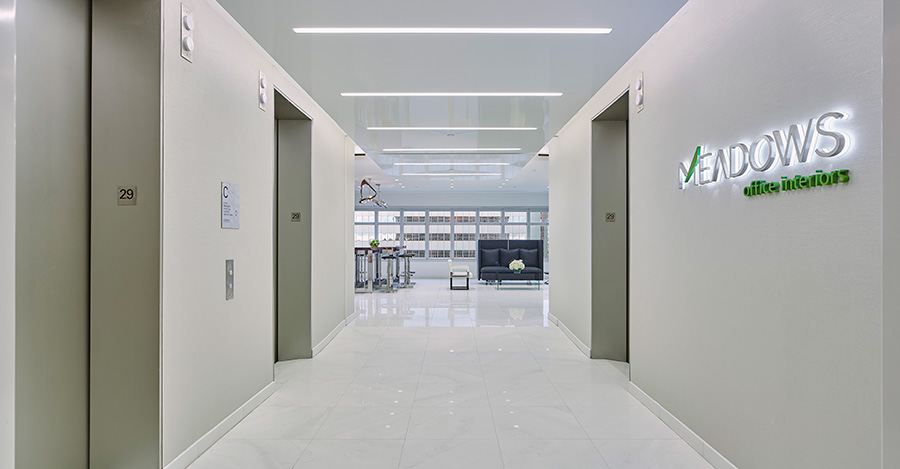Just as Facility Managers are feeling comfortable with certifications like LEED and a push for more energy efficient and sustainable spaces, a new standard is emerging. The WELL Building Standard and wellness movement have the potential to dwarf sustainability concerns by focusing on the growing issue of healthy workplaces.
Why It Was Created
We spend more than 90% of our time in buildings, the WELL Building Standard is the first of its kind to focus solely on health and wellness.
Everything from lack of mobility, poor air quality, food choices and workplace stress affect the daily health of occupants. The built environments shapes and influences all these factors. As a result, the workplace has a huge part to play in this as a place that people spend most of their waking hours.
What is the WELL Building Standard?
Launched in October 2014, the WELL Building Standard looks to address the health woes of the modern office. The International Well Building Institute (IWBI), founded by former Wall Street veteran, Paul Scalia, administers the WELL Building Standard.
The WELL Building Standard was developed over the course of 7 years. The process involved scientific, practitioner and medical expert research and review. The result is a combination of environmental health, building design, human health and behavioural factors. 7 different categories make up the final Standard: Air, Water, Nourishment, Light, Fitness, Comfort and Mind.

The Body Systems That the WELL Building Standard Accounts For (Image: IWBI)
How it Works
3 different typologies are available under the certification: New and Existing Buildings, New and Existing Interiors and Core and Shell.
For Facility Managers, the New and Existing Interiors section is most pertinent. 36 precondition requirements and 62 optimizations make up this section.
-Preconditions are required for all Levels of WELL (Silver Gold and Platinum).
-Optimizations are required for Gold and Platinum certifications only.

Requirements include and relate to, the type of lighting used within the space, air filtration, activity incentive programs, acoustic controls and integrative design and biophilia. These are just several precondition requirements of the 98 total features, as well as an additional 5 open ended innovation features.
For example, looking at the Air Filtration Requirements, there are 3 parts to the feature – Filter Accommodation, Particle Filtration and Air Filtration Maintenance:
An excerpt from the standard is provided below:

Excerpt from WELL Building Standard – Available for download from the IWBI
Each feature in the standard is broken down into several parts. Requirements are provided based on the typology – P for precondition and O for Optimization. Features are grouped into the 7 Categories specified above.
Some forward looking planning is required by Facility Managers. For example, extra space is required for filters to accommodate carbon filters under Part 1. It’s important to work with landlords on these initiatives. FMs should be looking to examples like TD and Cadillac Fairview and work with their property manager to implement WELL.
A Well Assessor completes a performance verification before a project achieves certification. This process includes performance tests, spot-checks and measurements spanning all 7 WELL Concepts.

Who’s Adopted It
As of the time of this post there are 6 certified New and Existing Commercial Interior Projects certified under the WELL Building Standard and another 94 that are registered.
TD

TD23 at the TD Centre in Toronto (Image: IWBI)
At their Toronto HQ, TD was the first in the world to implement WELL New and Existing Interiors certification, on the 23rd floor of the TD Centre. The 25,000 square foot renovation included over 60 WELL features including optimal lighting and enhanced water filtration at the tap.
Haworth

Haworth Inc. Head Office in Shanghai (Image: IWBI)
Others that have completed certification include Haworth’s Shanghai Head Office. The space highlights the organization’s Organic Spaces line and is helping the furniture manufacturer demonstrate their leadership with regards to product solutions, knowledge and design. Haworth has also committed to implement similar projects in North America and recently opened an LA office that is registered under the Standard .
Growing Number Of Other Firms
In the ongoing war for talent among fortune 500 companies, workspaces remain a large factor in employee attraction and retention. With WELL, employers are able to demonstrate a commitment to employee wellness and design spaces that can help attract a sought-after workforce.
Learn More
Version 1 of the standard was updated in May 2016 and is available for download:
Facility Managers interested in pursuing a WELL AP certification can register for upcoming sessions.





